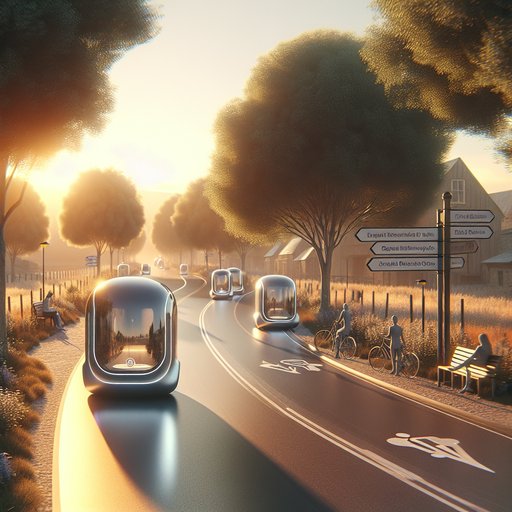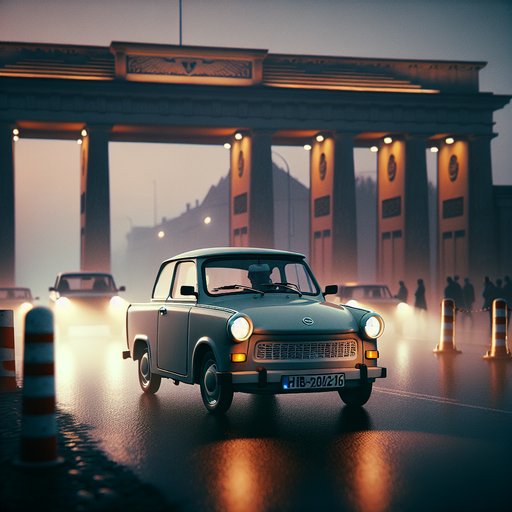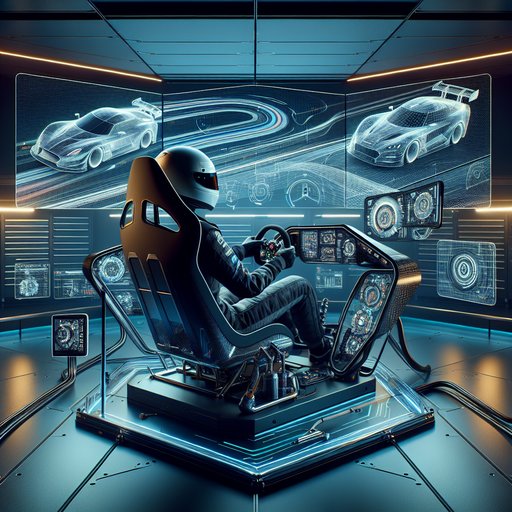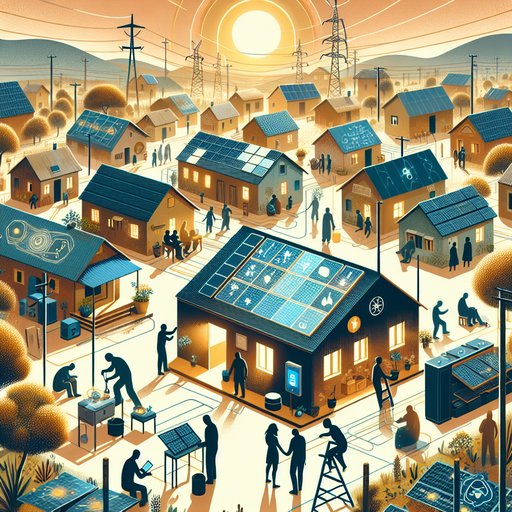
When the steering wheel slips into museums and the curb becomes a stage, cities and countrysides relearn how to move. The transition to AI-guided pods is not a single invention but a choreography of infrastructure, policy, habit, and desire. It looks less like technology replacing a machine and more like society reordering its time.
At dawn, streets hum at a different pitch. The growl and clatter that once rose from cold engines has thinned into a soft chorus of tires and motors, evenly spaced like notes in a metronome. Pods arrive nose-to-curb with the precision of a well-timed pit stop, doors sliding open in quiet symmetry. They do not idle to show off or creep to intimidate.
They pause, align, accept passengers, and whisk away without the momentary confusion that used to pass between driver and pedestrian. The city’s rhythm starts earlier and cleaner, and the morning feels less like a contest and more like a schedule kept. Intersections no longer perform as referees. The red-yellow-green ritual, an industrial-era compromise with human reaction times, yields to a weaving ballet of right-of-way calculations and millimeter trust.
Platoons form and dissolve without drama. A crosswalk remembers who has been waiting longest and tips the flow accordingly. Where trucks once bullied space, freight now slips through in quiet segments of off-peak hours, their routes negotiated by algorithms that swap convenience for quiet. The street is still a public promise—shared, contested, constantly reinterpreted—but the contest looks different when nobody holds a steering wheel.
Curbsides, once clogged with improvisation, become orchestrated space. There are lanes that appear and vanish, painted not with thermoplastic but with light. A delivery zone becomes a stroller lane becomes a café margin across the day, the street adapting as the neighborhood breathes. Dynamic pricing nudges pods toward consolidation, so that a school letting-out becomes a predictable, supervised shuttle burst instead of a clumsy tide of idling cars.
The infrastructure is less monumental than it is supple: sensors tolerating rain, signage that talks, corner radii softened because no one is trying to carry apex speed on a turn. The old traces—worn guardrails, scuffed paint—still speak, but their stories are turning into footnotes. Safety stops being a sermon and becomes a set of default behaviors. The old causes of death on the road—impatience, distraction, bravado—lose their leverage when speed is capped by consensus and right-of-way is resolved before the human eye perceives a dilemma.
Insurance practices shift from blaming bad days to auditing code and maintenance schedules; liability points upstream to fleets and their contractors, and to city standards that allowed a miscalibrated sensor to go uncorrected. Enforcement trades sirens for software updates. The police officer at the corner moves inside the system, a safety analyst with a heat map and escalation protocols. Where manual driving remains—in rural stretches, on private land, in designated tracks—the rules are bright-lined and narrow, neither an outlaw’s exception nor a fetish, just another mode with guardrails as clear as a racetrack’s.
Commuting, once an endurance sport with no trophy, rearranges itself. Seats turn toward one another. Work happens in transit because the jitteriness of a human foot is gone from the throttle. Pods are less car than room, designed for a purpose: focus, rest, conversation.
The aesthetic borrows from train compartments more than from dashboards, with a vocabulary of privacy screens and adjustable lighting instead of tachometers and shift gates. For those who once found identity in ownership, this feels like exile at first. But customization bends to interior worlds instead of exterior badges—textures, small conveniences, a favored scent, a playlist that picks up from the last ride. In a network where mobility is priced by distance and congestion instead of by monthly payment, access becomes the status, and a well-run public system can confer it.
The grid listens and speaks back. Charging happens invisibly, in overnight depots built where substations and old warehouses intersect. Batteries in idle pods trade power with the grid in small sips, smoothing surges that used to come from air conditioners and heat pumps when the sky changed. Vehicle-to-everything links, inherited from decades of incremental progress in driver assistance, let intersections preheat for snow, and scooters negotiate around washouts before a human tweets a warning.
The hardware is deliberately boring: solid-state sensors with fewer moving parts than a door latch, standardized mounts so a failed module is a pit stop, not a catastrophe. Weather remains the old adversary; snow masks lane stripes and rains blind LIDAR. The difference is procedural. The network slows and reroutes as a unit, and the risk of one impatient ego unravels into a manageable delay.
Outside the dense city, the choreography adjusts. Pods space out on long runs and accept that time stretches for safety in fog or on frost. They wait for a tractor to finish a turn on a county road because the map knows this is harvest season and that machine’s GPS is momentarily blind behind a grove. Remote operators step in for odd tasks—a gate code, a flooded ford—under tight audit, a throwback to the earliest teleoperation trials that bridged autonomy’s gaps.
The rural station looks different: a shelter with parcel lockers, a bench with a view, a charging post that doubles as a small grid battery for a town where storms still take down lines. The autonomy here is not a denial of the landscape but an accommodation of it. Car culture, which once defined generations by the badge on a grille, survives by changing contexts. The private car becomes a hobby object, like a sailboat or a fountain pen, loved for what it asks rather than what it solves.
There are still engines and tracks, still weekends scented with fuel and brewed coffee, still museums where a mid-century coupe can make a teenager stop mid-step. Motorsport, the crucible that gave road cars disc brakes, ABS, energy recovery, finds new edges to polish: robot endurance teams optimizing for battery health instead of pit strategy, sim-to-real leagues where code is homologated as tightly as bodywork, safety cells tested with the same ferocity as ever because physics remains insistent. The spectacle shifts, but the impulse behind it—the urge to measure, to compete, to celebrate ingenuity—does not wither. The politics of motion do not evaporate; they change shape.
A company’s routing algorithm can make or unmake the fortunes of a corner shop by diverting footfall three blocks away. A city’s choice to prioritize night deliveries may keep daytime quiet while making late-shift neighborhoods a staging ground. Data, dense and valuable, demands governance that is not an afterthought; standards bodies and city councils become stewards of mobility as public space, writing rules about retention, about the right to be forgotten between stops, about who gets guaranteed service at what price. The old signage becomes a palimpsest, and over it new signs—legal and literal—are painted, sometimes shakily.
People watch, learn the new tells, and insist on corrections as only daily users can. The soundscape changes, and with it, a kind of memory. Streets no longer teach children to gauge character by the angle of a parked car’s wheels or the soundtrack of an approaching engine. Instead, they learn to read the language of lights and the rhythm of fleets.
It is tempting to mistake this for a loss of agency, to say that surrendering the wheel means surrendering choice. But choice migrates rather than disappears—to route allowances voted on in council chambers, to the terms-of-service clauses rearranged under public pressure, to the periodic decisions to leave the network and take a bicycle, a train, a walk. Society adapts not by forgetting how to drive, but by remembering why it moved in the first place. There are still edges and arguments.
A festival closes a boulevard and the network reflows; a snowstorm blankets a region and people wait with thermoses while the grid reboots and the pods creep back, blinking frost from their lids. The steering wheel lives on in museums and in a few well-guarded garages, a reminder of a century that gave us both mobility and risk in the same hand-sized circle. It is not a villain, and the pod is not a savior. They are tools from different chapters, bracketed by the same human motives—time saved, distances closed, futures imagined.
Adapting, as ever, is the slow craft of matching means to ends and leaving room for surprise.










































